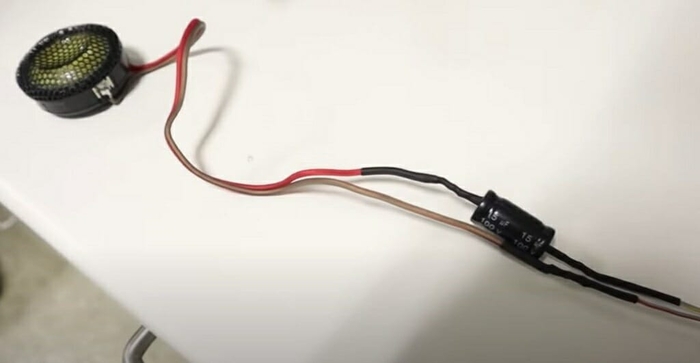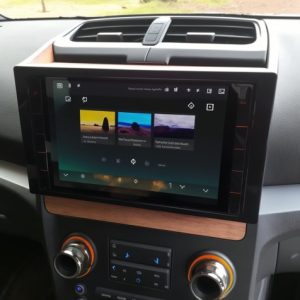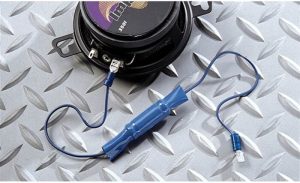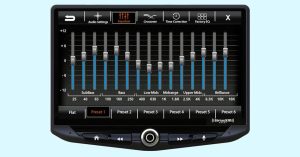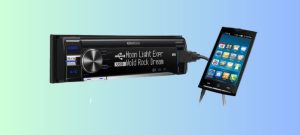Tweeters are an important part of any sound system, as they are responsible for reproducing high-frequency sounds. However, many people believe that using a crossover is necessary when wiring tweeters to prevent damage to the speakers. But what if you don’t have a crossover or want to wire your tweeters without one? In this article, we’ll show you how to wire tweeters without a crossover and still get the best possible sound quality.
Contents
Understanding the Role of a Crossover
A crossover is an electronic component that is used to separate the frequencies in an audio signal and send them to the appropriate speaker. This is important because different types of speakers are designed to handle different frequency ranges. Tweeters, for example, are designed to handle high frequencies, while woofers are designed to handle low frequencies. Without a crossover, the tweeter may receive signals that are too low in frequency, which can cause damage to the speaker.
The Risks of Not Using a Crossover
If you don’t use a crossover when wiring your tweeters, there is a risk of damaging the speakers. When a tweeter receives a signal that is too low in frequency, it may overheat and eventually fail. This is because tweeters are designed to handle high frequencies, and they are not capable of handling low frequencies. Additionally, without a crossover, the sound quality may be poor, as the tweeter may not receive the appropriate frequency range.
How to Wire Tweeters without Crossover
Wire tweeters without a crossover is a simple process, but it requires some basic knowledge of electrical wiring. Here are the steps:
- Determine the impedance of your tweeter. This is usually written on the back of the speaker or in the user manual. Impedance is the measure of resistance to an alternating current (AC) that flows through a speaker. It’s important to know the impedance of your tweeter because it will help you to match it with the amplifier or receiver.
- Connect the positive wire from your amplifier or receiver to the positive terminal of your tweeter. The positive wire is usually marked with a “+” sign, and the positive terminal of the tweeter is usually marked with a “+” sign as well.
- Connect the negative wire from your amplifier or receiver to the negative terminal of your tweeter. The negative wire is usually marked with a “-” sign, and the negative terminal of the tweeter is usually marked with a “-” sign as well.
- Use a frequency generator or test tone CD to play a high-frequency sound through your system. This will allow you to test the sound output of your tweeter and ensure that it is functioning properly. A frequency generator produces a specific frequency, while a test tone CD contains a variety of different frequencies that you can use to test your system.
- Adjust the volume until the tweeter is playing at the desired level. If the volume is too low, the tweeter may not produce any sound, while if it’s too high, it could cause the tweeter to distort or even be damaged. It’s important to find the right balance that produces the desired sound output without damaging the tweeter.
Benefits of Using a Crossover
A crossover is an essential component of any sound system because it separates the audio signal into different frequency ranges and sends each range to the appropriate speaker. The benefits of using a crossover include:
Protects Speakers:
Each speaker in a sound system is designed to handle a specific range of frequencies. Without a crossover, each speaker would receive the entire range of frequencies, which could cause damage to the speakers. A crossover prevents this by sending each range of frequencies to the appropriate speaker, protecting them from damage.
Improves Sound Quality:
By sending each frequency range to the appropriate speaker, a crossover ensures that each speaker is reproducing the sound it is designed to handle. This improves sound quality by reducing distortion and ensuring that each instrument or vocal is heard clearly.
More Control Over Sound:
A crossover allows the user to adjust the volume and frequency response of each speaker independently, giving them greater control over the sound of their system. This means they can adjust the system to suit their preferences or the type of music being played.
Provides Flexibility:
A crossover can be used with a variety of different speaker types and configurations, giving the user the flexibility to design a system that suits their needs. This means they can use different types of speakers, such as woofers, mid-range speakers, and tweeters, and still achieve optimal sound quality.
Types of Crossovers
Here are the most common types of crossovers:
- Passive Crossover: A passive crossover is the most common type of crossover and is often used in home and car audio systems. It uses capacitors and inductors to filter out unwanted frequencies and send each frequency range to the appropriate speaker. Passive crossovers are easy to install and require no external power source, making them a popular choice among DIY enthusiasts.
- Active Crossover: An active crossover is more complex than a passive crossover and requires an external power source to operate. It uses electronic circuits to filter out unwanted frequencies and send each frequency range to the appropriate speaker.
- Digital Crossover: A digital crossover is a relatively new type of crossover that uses digital signal processing (DSP) to filter out unwanted frequencies and send each frequency range to the appropriate speaker. Digital crossovers are highly accurate and offer more precise control over the sound than passive or active crossovers.
- Three-Way Crossover: A three-way crossover is designed for systems that have three different types of speakers, typically a woofer, a mid-range speaker, and a tweeter. It splits the audio signal into three frequency ranges and sends each range to the appropriate speaker.
- Bi-Amp Crossover: A bi-amp crossover is designed for systems that have two amplifiers, one for the high-frequency range and one for the low-frequency range. It separates the audio signal into two frequency ranges and sends each range to the appropriate amplifier.
- Subwoofer Crossover: A subwoofer crossover is designed to send only the low-frequency range to a subwoofer. It’s typically used in home theater systems or music systems where deep bass is desired.
Each type of crossover has its unique advantages and disadvantages, and the choice of which type to use will depend on the specific needs and preferences of the user.
Alternatives to Using a Crossover
While crossovers are commonly used in sound systems to separate the audio signal into different frequency ranges and send each range to the appropriate speaker, there are some alternatives to using a crossover. Here are some of the alternatives:
- Full-Range Speakers: Full-range speakers are designed to handle the entire audio frequency range without the need for a crossover. They have a single driver that can produce both low and high frequencies. While full-range speakers are simple to use and require no additional equipment, they may not provide the same level of sound quality as a system with separate drivers and a crossover.
- Equalizers: An equalizer is a device that allows you to adjust the volume levels of specific frequency ranges. While an equalizer doesn’t separate the audio signal like a crossover, it can be used to adjust the sound output of each speaker in the system. This can help to compensate for any deficiencies in the speakers or the room acoustics.
- Amplifier Settings: Some amplifiers have built-in settings that allow you to adjust the frequency response of the speakers. This can be used to boost or cut certain frequency ranges to achieve a desired sound. While this method doesn’t separate the audio signal like a crossover, it can help to tailor the sound output of the speakers to the room acoustics.
- Bi-Wiring: Bi-wiring involves connecting two sets of speaker cables to each speaker, one for the high frequencies and one for the low frequencies. While this doesn’t separate the audio signal like a crossover, it can help to reduce interference between the different frequency ranges and improve the sound quality.
It’s important to note that while these alternatives can be used instead of a crossover, they may not provide the same level of sound quality as a properly designed crossover system.
Conclusion
Wiring tweeters without a crossover is possible, but it’s important to understand the risks and limitations. If you decide to wire your tweeters without a crossover, be sure to follow the steps outlined in this article carefully. Remember that using a crossover will likely produce better sound quality, so it’s worth considering if you want the best possible sound from your system.
